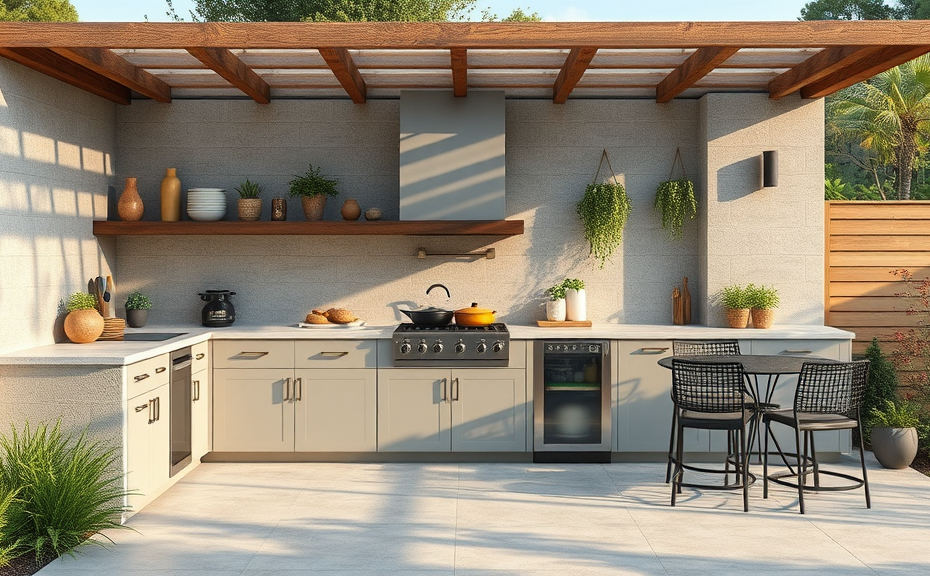Benefits of Using Cement Board for Outdoor Kitchens
Cement board outdoor kitchen installations are becoming increasingly popular due to their durability and moisture resistance. Unlike traditional wood or drywall materials, cement board provides a solid, weatherproof base that withstands rain, humidity, and temperature fluctuations without warping or deteriorating. This makes it an ideal choice for outdoor environments where exposure to the elements is constant.
Durability and Weather Resistance
One of the key advantages of cement board in outdoor kitchen construction is its resilient nature. Cement board won’t rot, swell, or attract mold, making it perfect for supporting countertops, appliances, and cabinetry. This material also holds tiles and stone veneers exceptionally well, allowing for versatile design options that maintain their integrity over time.
Easy Installation and Maintenance
Installing a cement board outdoor kitchen is relatively straightforward. Cement boards can be cut to size with standard tools and easily fastened to framing. Once installed, the surface requires minimal upkeep—just occasional cleaning to keep it looking fresh. Its fire-resistant properties also add an extra layer of safety, especially important for outdoor cooking areas.
Aesthetic Flexibility
Because cement board serves as a strong, stable substrate, it supports a wide range of finishes. Homeowners can customize their outdoor kitchens with tile mosaics, brick veneers, or natural stone, all securely attached to the cement board. This versatility ensures you can achieve both functional and attractive outdoor cooking spaces that withstand the test of time.
Key Reasons to Choose Cement Board Outdoor Kitchens
- Superior waterproofing and weather resistance
- Resistance to mold, mildew, and pests
- Strong support for heavy materials and appliances
- Fire-resistant and safe for cooking zones
- Low maintenance and long-lasting performance
